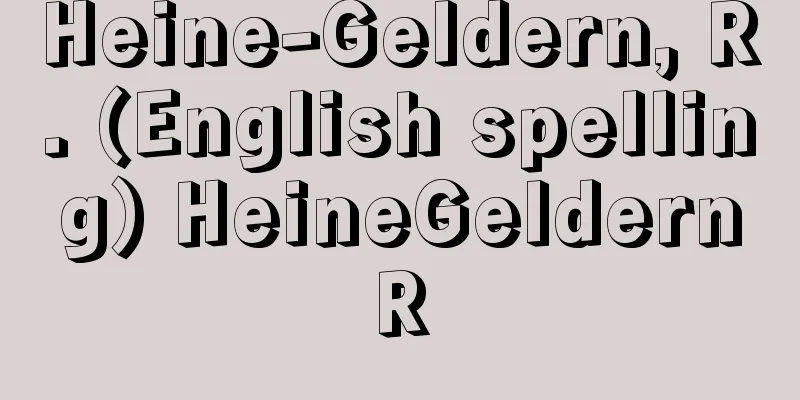Security measures - Hoanshobun

|
A criminal disposition other than criminal punishment used to prevent and stop crime. It differs from administrative disposition in that it is handed down in a criminal trial. While criminal punishment is a means of realizing normative retribution and condemnation of crimes by imposing pain, administrative disposition requires the existence of a crime in a broad sense (illegal acts that violate criminal law), but is a means of eliminating or preventing the manifestation of the criminal danger of a person or object. Theoretically, there is a distinction between dispositions directed at persons (security measures in the narrow sense) and dispositions directed at property (e.g., confiscation, closure of business establishments), and further, dispositions directed at persons can be divided into those aimed at security and those aimed at improvement, and those that involve detention in facilities and those that do not. Typical interpersonal measures include, for example, institutional confinement, preventive measures against criminals who are likely to repeat serious crimes, treatment measures against the mentally ill, abstinence measures against alcohol or drug addicts, and labor measures against those who abhor work, as well as measures that do not involve institutional confinement, such as revocation of driver's licenses, residential restrictions, probation, and castration. In the mid-19th century, rapid industrialization and urbanization in European societies produced many criminals, especially repeat offenders, while the criminal law emphasized the principle of criminal legality and responsibility, placing certain restrictions on the exercise of the right to punish. As a result, social order could not be adequately maintained, and the need for the institution of security measures was stressed. Modern criminal law theory considered punishment to be a means of social defense and advocated the unification of punishment and measures, but the security measures adopted in some countries (e.g. Germany, Italy) in the 20th century, starting with the Swiss Criminal Code draft by Stoss in 1893, adopted a dualist approach with punishment. In Japan, attempts were made to adopt it during the process of the revision of the Penal Code, and before the Second World War, there were cases where it was institutionalized as a special law, such as preventive detention under the Peace Preservation Law. After the war, the preliminary draft of the revised Penal Code (Article 109 onwards) and the draft revised Penal Code (Article 97 onwards) stipulated treatment measures for the mentally disabled and prohibition measures for alcoholics and drug addicts, and the necessity of these measures was recognized, but they have not yet been institutionalized due to the difficulty of selecting recipients and concerns about the risk of violating the human rights of the recipients. Currently, measures that can perform a function similar to security measures include involuntary hospitalization (treatment measures) under the Mental Hygiene Law (renamed the Mental Health Law in 1988 and the Mental Health and Welfare Law in 1995), hospitalization or outpatient treatment at a designated medical institution (treatment measures) under the Medical Observation Law (Law on Medical Treatment and Observation, etc. of Persons Who Have Committed Serious Harm to Others in a State of Insanity, etc.), guidance measures (labor measures) under the Prostitution Prevention Law, probation for adults, and protective measures for juveniles. [Shuichi Susuki and Akikazu Konishi] [Reference item] | |Source: Shogakukan Encyclopedia Nipponica About Encyclopedia Nipponica Information | Legend |
|
犯罪を防ぎ止めるために用いられる刑罰以外の刑事処分。刑事裁判で言い渡される点で行政処分とは異なる。刑罰が責任を前提にして、犯罪に対する規範的応報・非難を苦痛の賦課によって現実化する手段であるのに対し、広義の犯罪(刑罰法規に触れる違法な行為)があることは要件とするが、もっぱら人または物の犯罪的危険性に着目してその解消または発現の抑止を図る手段である。理論的には、対人的処分(狭義の保安処分)と対物的処分(例、没収・営業所閉鎖)の別があり、さらに、対人的処分については、保安を目的とするものと改善を目的とするもの、施設収容によるものとそうでないもの、などに区別できる。典型的な対人的処分としては、たとえば、施設収容処分として、重大な犯罪を反復するおそれのある犯罪者に対する予防処分、精神障害者に対する治療処分、アルコールや薬物の中毒者に対する禁絶処分、労働嫌忌者に対する労作処分があり、施設収容を伴わないものとして、運転免許の剥奪(はくだつ)、居住制限、保護観察、去勢などがある。 19世紀の中ごろ、ヨーロッパ諸国では、社会の急激な工業化、都市化によって、多くの犯罪者、とくに累犯者が生み出され、他方で刑法において罪刑法定主義、責任主義が強調されて、刑罰権の発動に一定の制約が設けられていた。そのため、社会の秩序を十分に維持することができない状態にあり、保安処分の制度化の必要性が説かれた。近代学派の刑法理論は、刑罰を社会防衛手段と考え刑罰と処分の一元化を主張したが、1893年のストースによるスイス刑法草案をはじめとして、20世紀に入っていくつかの国(例、ドイツ、イタリア)で採用された保安処分は、刑罰との二元主義をとるものであった。 日本では、刑法改正事業の過程でその採用が試みられ、第二次世界大戦前には、治安維持法の予防拘禁のように特別法で制度化された例もある。戦後、改正刑法準備草案(109条以下)、改正刑法草案(97条以下)が、精神障害者に対する治療処分、アルコール・薬物中毒者に対する禁絶処分を規定し、その必要性は認識されているが、対象者の選択のむずかしさと対象者の人権侵害の危険性への不安から、制度化されるまでには至っていない。現在、保安処分に類する機能を営みうるものとしては、精神衛生法(1988年「精神保健法」、1995年「精神保健福祉法」に改称)の措置入院(治療処分)、医療観察法(心神喪失等の状態で重大な他害行為を行った者の医療及び観察等に関する法律)の指定医療機関入院・通院(治療処分)、売春防止法の補導処分(労作処分)、成人に対する保護観察、少年に対する保護処分などがある。 [須々木主一・小西暁和] [参照項目] | |出典 小学館 日本大百科全書(ニッポニカ)日本大百科全書(ニッポニカ)について 情報 | 凡例 |
<<: Pointe-à-Pitre (English spelling)
>>: Security Ordinance - Hoanjourei
Recommend
Milk of lime
…However, the dissolved part is strongly alkaline...
Giving back - Ongaeshi
[Noun] (suru) To repay a favor received. Giving ba...
Tennoji side
A term used in gagaku. A name indicating the linea...
Song of the Dragonfly Heaven - Yongbi ǒch'ǒnga
A musical piece from the early Joseon Dynasty of K...
Pearl Danio (English)
...Because their mouths are small, there is no pr...
Pharaoh's ant
An insect belonging to the family Formicidae in t...
Japan Aircraft Manufacturing Co., Ltd.
A semi-public, semi-private special corporation es...
décrets de ventôse (English spelling) decrets de ventose
…From this time until his death a year later, he ...
Seki Sanjuro
Kabuki actor. There are six generations. The stage...
Ruiyou peony - Ruiyou peony
Its leaves resemble those of the peony, hence the ...
Lake Wakatipu (English spelling)
It is one of the glacial lakes in the southwest of...
Okinoshima Island
Okinoshima is an island in the Genkai Sea that bel...
Rhopalocera
… Most moths are nocturnal, so many of them have ...
Mr. Isobe
…Rice from the official fields in the Kinai regio...
Void
In physics, it is used in two ways: (1) Atomic va...









